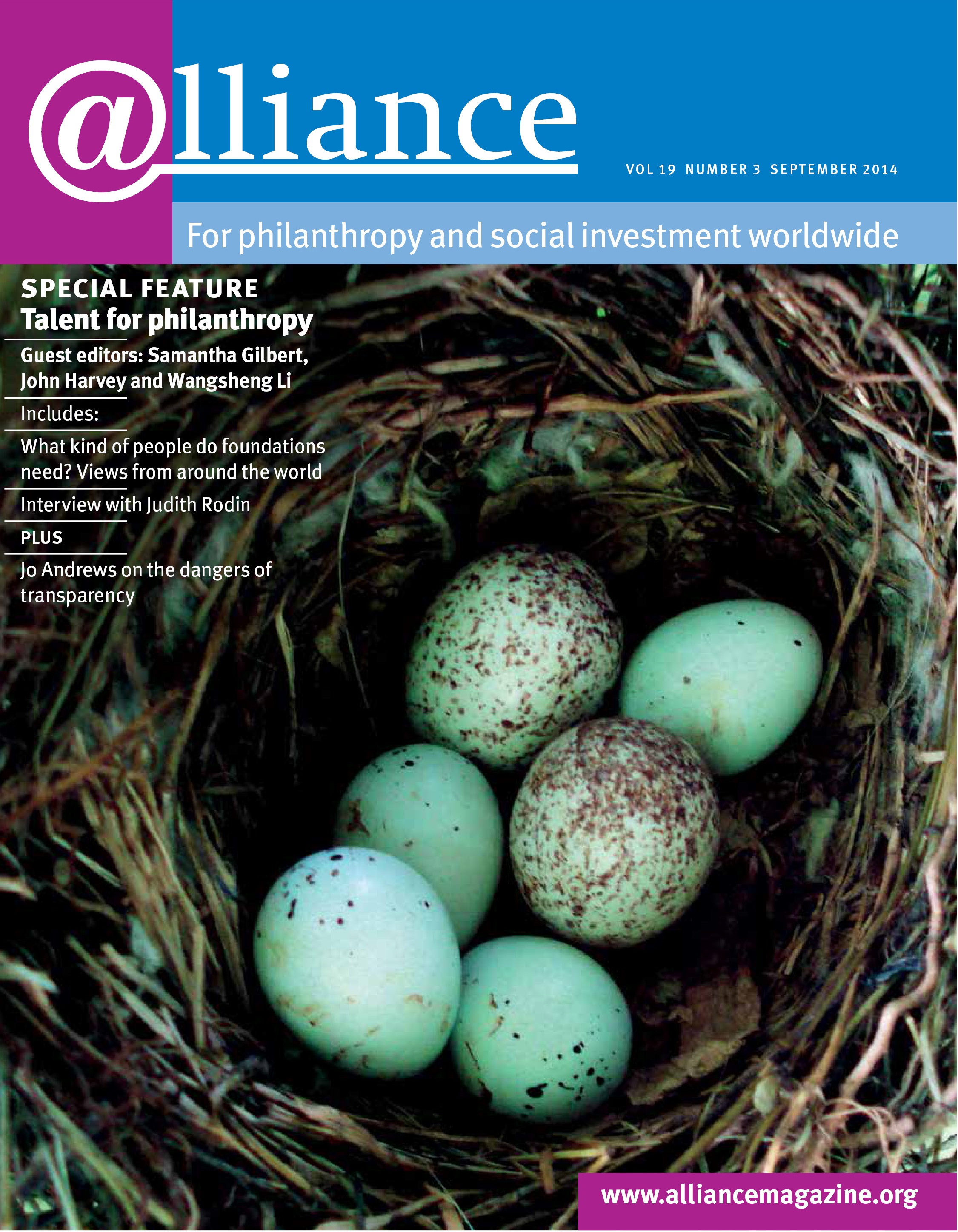There are indeed many questions about how the mingling of investment and charity will affect the behaviour of donors, as Martin Brookes writes in the June issue of Alliance. I was pleased to see these questions raised as questions – too often they are either ignored by proponents, as if the questions didn’t exist, or played as trump cards by opponents, as if possibilities were facts which should preclude experimentation and innovation.
The evidence on how the injection of market mechanisms into the social sector changes behaviour is mixed. There is no definitive way of answering such questions without real-world ‘experiments’ – forays into this world that are purposefully designed to provide evidence. As I’ve heard many times among my colleagues in the impact evaluation field, ‘You don’t get to choose whether you experiment; you only get to choose whether you learn something from it.’
There is another set of questions that Mr Brookes’ doesn’t pose which also need answers. There are behavioural and ethical questions about how market mechanisms change the behaviour of non-profits. For instance, when a charity runs multiple programmes, some funded by social impact bonds and others not, will executives shift their own time and effort to the more commercial activities? They may perceive that investors are less forgiving and less patient than donors. If so, that raises an ethical question: is this not an example of charitable donations subsidizing commercial returns? In the microfinance sector, where commercial, social and philanthropic capital have sloshed together for more than a decade, there is evidence that concerns about who is served, who benefits and whether there are conflicts of interest must be taken seriously (see Cull et al[1] and the SKS and Unitus stories).
Here’s hoping that the advance guard in social impact bonds takes Mr Brookes’ and related questions seriously and are planning to find answers – answers that should be a critical factor in what comes next after the first round of social impact bond offerings.
Timothy Ogden
Managing director, Financial Access Initiative, New York University
1 Robert Cull et al (2009) ‘Microfinance Meets the Market’ in Journal of Economic Perspectives, 23(1). http://www.aeaweb.org/articles.php?doi=10.1257/jep.23.1.167



Comments (0)